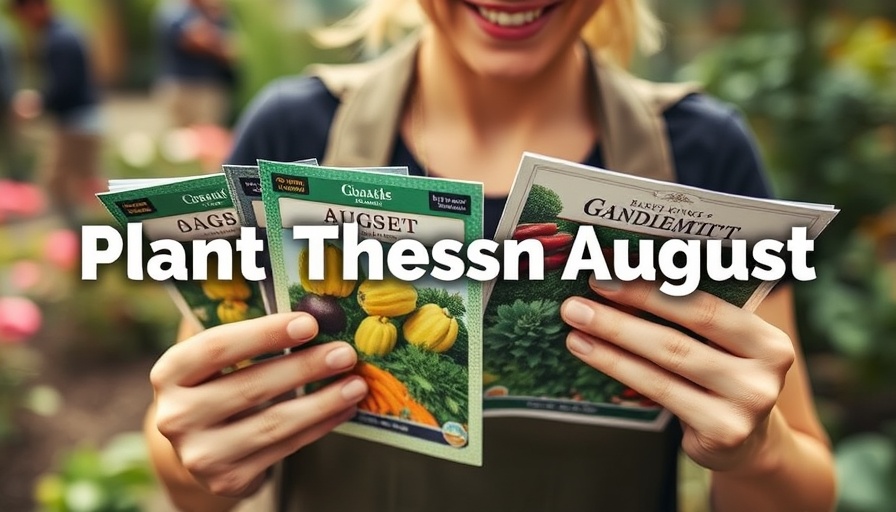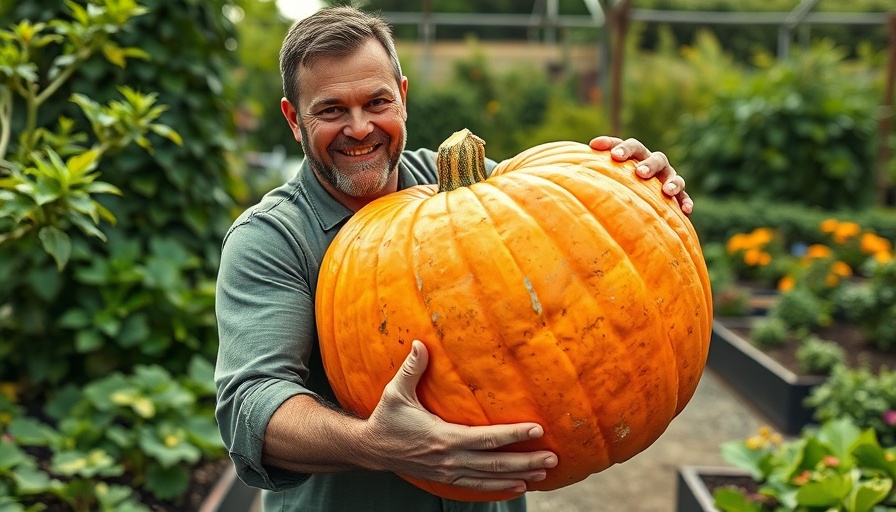
Ready to Plant: Discovering Ideal Crops for August
As August rolls in, gardeners everywhere are looking for crops that thrive despite the lingering summer heat. This is especially true for those in Metro Vancouver, where small spaces can still yield a bountiful garden. In our exploration of what's best to plant, this article highlights some remarkable options that not only beautify your garden but can also be enjoyed at your dinner table.
In '11 Crops You Can STILL Plant August!', the discussion dives into effective planting strategies for late summer, exploring key insights that sparked deeper analysis on our end.
Amaranth: The Versatile Superplant
Amaranth, often overlooked, is a robust plant that can add color and nutritional value to your garden. Known for its striking appearance, it features both edible leaves and seeds. Growing amaranth is easy; it can self-seed and return year after year, making it a recurring beauty in your garden while providing an edible yield. If you're looking to maximize flavor, consider the burgundy variety. Starting it indoors in seed trays and then transplanting it outdoors will ensure that you can harvest it even as the temperature begins to cool.
Greens Galore: Gourmet Baby Greens
For those craving fresh lettuce, August is the perfect month to sow gourmet baby greens. This seed mix offers a delightful variety of lettuce types, including butterhead and Roma, ensuring you have a colorful and tasty harvest. Easy to grow and care for, these greens thrive in the cooler nights that begin to grace Vancouver in early fall. Plus, every seedling can be consumed, meaning you'll always have fresh leaves for salads!
Restoring Soil Health with French Marigolds
August also presents an opportunity to address pest problems organically. Planting French marigolds not only deters root-knot nematodes—often the bane of many gardeners—but they add vibrant color to your plot. Their pungent aroma helps eliminate pests, making them a smart choice for your garden's ecosystem.
Engaging with Local Challenges: The Fall Tomato Rush
Especially for residents in warm climates like central Florida, timing is everything when it comes to crops like tomatoes. If you’re in a cooler area, you can start your fall tomatoes indoors. Determinant varieties are great for small spaces—they’re bushier, yielding abundant fruits early enough to harvest before frost hits. This proactive strategy can produce a fruitful outcome, even in smaller urban gardens.
Kale and Other Cool Weather Crops
Kale is another fantastic choice for planting in August. The popular dinosaur kale thrives in cooler temperatures, making it a perfect garden addition as summer transitions into fall. Other choices like broccoli and cauliflower can also be started early, allowing for a steady harvest. As your summer plants start to fade, you can cover those areas with new growth, maximizing your garden's productivity.
Concluding Thoughts: Embrace Your Urban Garden Today
In Metro Vancouver, it's crucial to make the most of every inch you have. Whether you're planting amaranth, gourmet greens, or French marigolds, the possibilities are endless. This August, consider starting a fall garden that not only beautifies your space but also yields delicious crops for your table. Remember to take care when planning your plantings to avoid common pitfalls and ensure a productive garden. Happy gardening!
 Add Row
Add Row  Add
Add 




Write A Comment